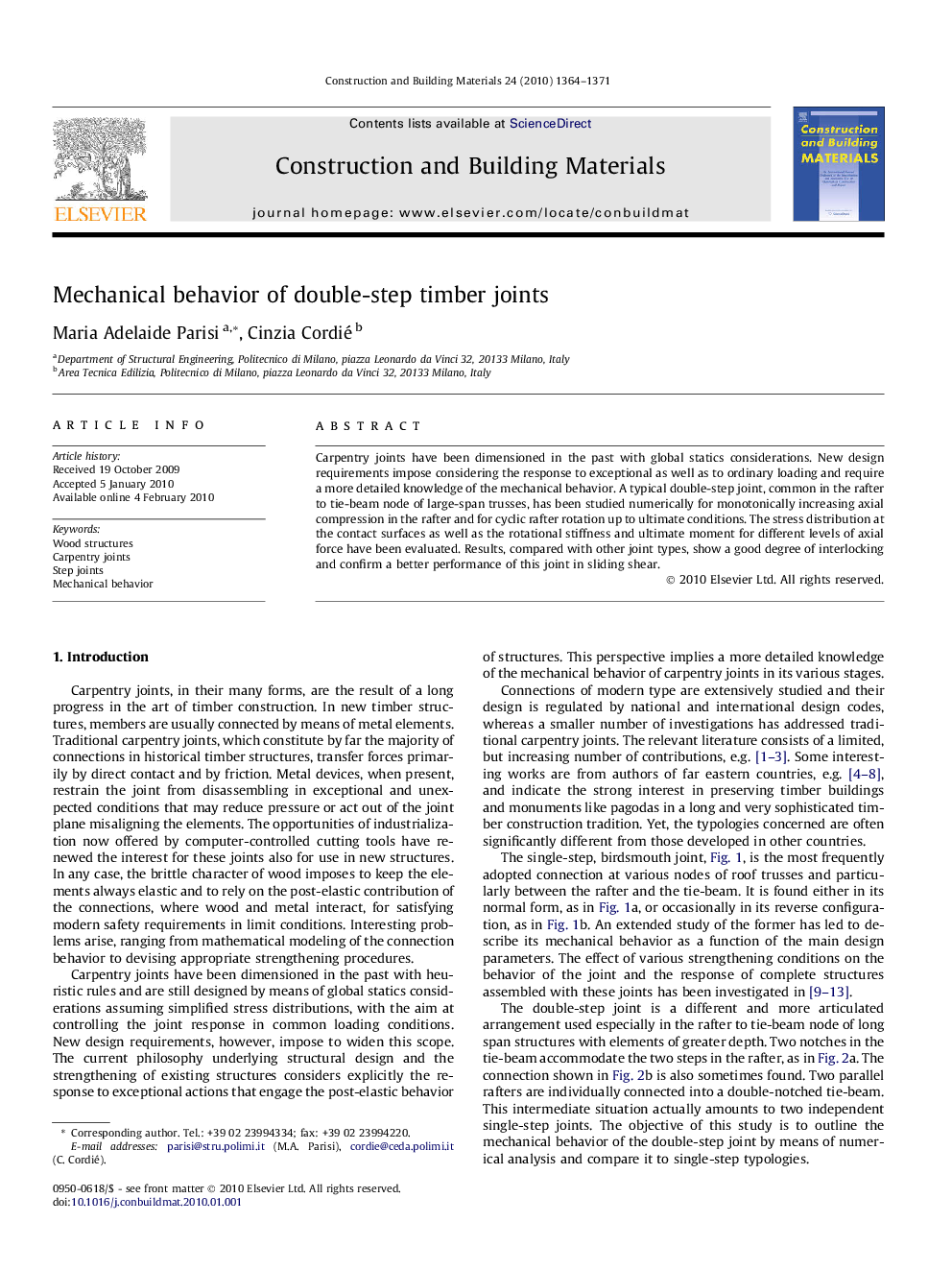| Article ID | Journal | Published Year | Pages | File Type |
|---|---|---|---|---|
| 259417 | Construction and Building Materials | 2010 | 8 Pages |
Carpentry joints have been dimensioned in the past with global statics considerations. New design requirements impose considering the response to exceptional as well as to ordinary loading and require a more detailed knowledge of the mechanical behavior. A typical double-step joint, common in the rafter to tie-beam node of large-span trusses, has been studied numerically for monotonically increasing axial compression in the rafter and for cyclic rafter rotation up to ultimate conditions. The stress distribution at the contact surfaces as well as the rotational stiffness and ultimate moment for different levels of axial force have been evaluated. Results, compared with other joint types, show a good degree of interlocking and confirm a better performance of this joint in sliding shear.
